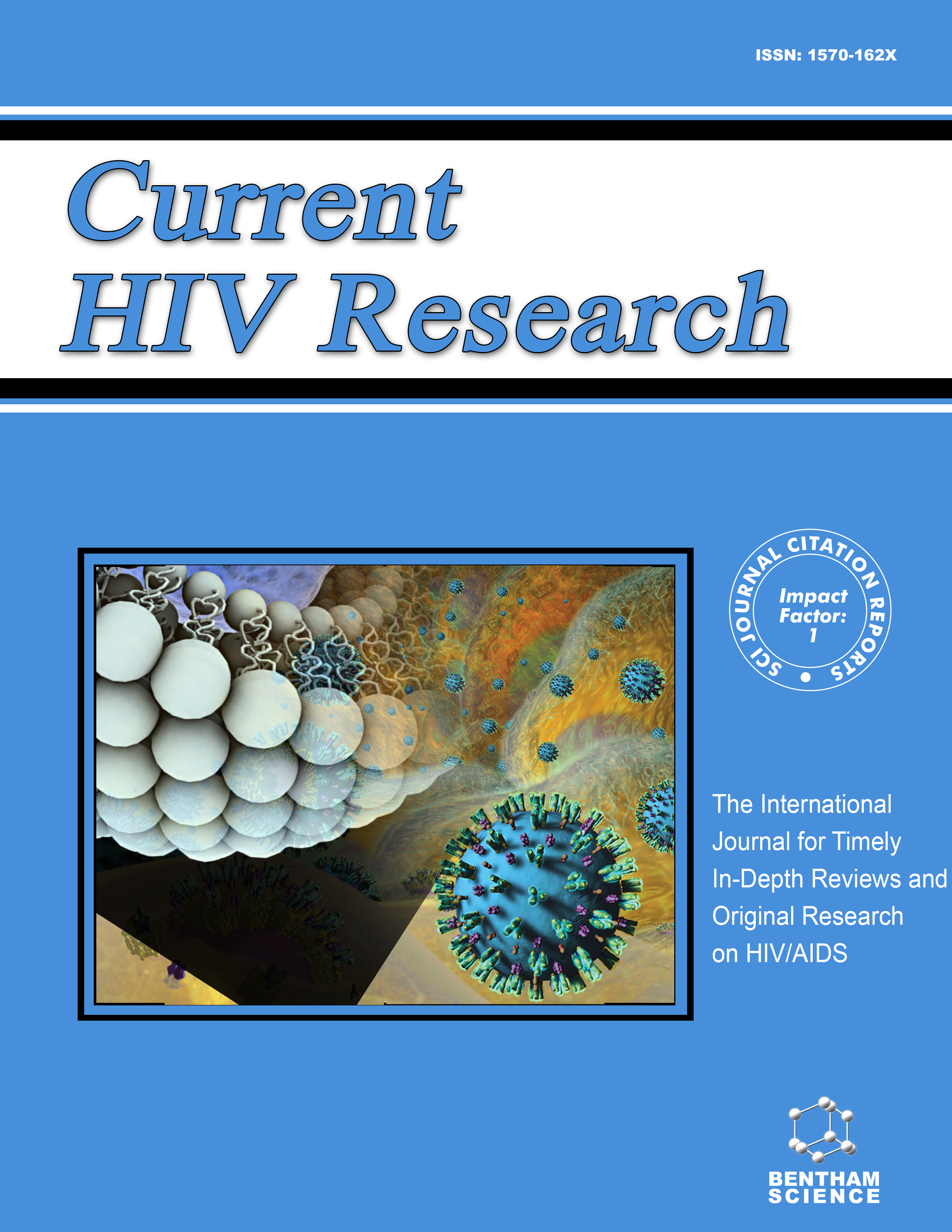- Home
- A-Z Publications
- Current HIV Research
- Previous Issues
- Volume 12, Issue 2, 2014
Current HIV Research - Volume 12, Issue 2, 2014
Volume 12, Issue 2, 2014
-
-
Editorial (Thematic Issue: The Monocyte/Macrophage in the Pathogenesis of AIDS: The Next Frontier for Therapeutic Intervention in the CNS and Beyond: Part I)
More LessMonocytes, macrophages, and microglia, play multiple roles in the pathogenesis of HIV infection. In addition to providing a tissue reservoir of infection, HIV infected and non-infected macrophages enter and accumulate in the Central Nervous System, where virus infection spreads to resident glial cells including astrocytes and microglia. This process contributes to the secretion of toxic molecules and inflammatory cyto Read More
-
-
-
Cognitive Consequences of a Sustained Monocyte Type 1 IFN Response in HIV-1 Infection
More LessBy Lynn PulliamWith successful antiretroviral therapy, HIV-1-infected subjects can achieve undetectable peripheral viral loads and immune homeostasis. However, in a subset of individuals on therapy, peripheral monocytes have a gene expression profile characteristic of a type 1 interferon α (IFN) response. This type 1 IFN response correlates with a number of pathogenic conditions including neural cell injury and in combination with HCV infe Read More
-
-
-
Monocytes Mediate HIV Neuropathogenesis: Mechanisms that Contribute to HIV Associated Neurocognitive Disorders
More LessHIV infected people are living longer due to the success of combined antiretroviral therapy (cART). However, greater than 40-70% of HIV infected individuals develop HIV associated neurocognitive disorders (HAND) that continues to be a major public health issue. While cART reduces peripheral virus, it does not limit the low level, chronic neuroinflammation that is ongoing during the neuropathogenesis of HIV. Monocyte transmig Read More
-
-
-
Brain Inflammation is a Common Feature of HIV-Infected Patients without HIV Encephalitis or Productive Brain Infection
More LessAuthors: Eleonora Tavazzi, David Morrison, Peter Sullivan, Susan Morgello and Tracy FischerHIV-associated neurocognitive disorders (HAND) describes different levels of neurocognitive impairment, which are a common complication of HIV infection. The most severe of these, HIV-associated dementia (HIV-D), has decreased in incidence since the introduction of combination antiretroviral therapy (cART), while an increase in the less severe, minor neurocognitive disorder (MND), is now seen. The neuropathoge Read More
-
-
-
Macrophage Derived Cystatin B/Cathepsin B in HIV Replication and Neuropathogenesis
More LessMononuclear phagocytes including monocytes and macrophages, are important defense components of innate immunity, but can be detrimental in HIV-1 infection by serving as the principal reservoirs of virus in brain and triggering a strong immune response. These viral reservoirs represent a challenge to HIV-1 eradication since they continue producing virus in tissue despite antiretroviral therapy. HIV-1 associated neurocognitiv Read More
-
-
-
Modeling and Simulation Approach to Support Dosing and Study Design Requirements for Treating HIV-Related Neuropsychiatric Disease with the NK1-R Antagonist Aprepitant
More LessPsychiatric illness is common in HIV-infected patients and underlines the importance for screening not only for cognitive impairment but also for co-morbid mental disease. The rationale for combining immunomodulatory neurokinin- 1 receptor (NK1-R) antagonists with combined antiretroviral therapy (cART) is based on multimodal pharmacologic mechanisms. The NK1-R antagonist aprepitant’s potential utility as a drug for dep Read More
-
-
-
Bioinformatic Analysis of HIV-1 Entry and Pathogenesis
More LessThe evolution of human immunodeficiency virus type 1 (HIV-1) with respect to co-receptor utilization has been shown to be relevant to HIV-1 pathogenesis and disease. The CCR5-utilizing (R5) virus has been shown to be important in the very early stages of transmission and highly prevalent during asymptomatic infection and chronic disease. In addition, the R5 virus has been proposed to be involved in neuroinvasio Read More
-
Volumes & issues
-
Volume 23 (2025)
-
Volume 22 (2024)
-
Volume 21 (2023)
-
Volume 20 (2022)
-
Volume 19 (2021)
-
Volume 18 (2020)
-
Volume 17 (2019)
-
Volume 16 (2018)
-
Volume 15 (2017)
-
Volume 14 (2016)
-
Volume 13 (2015)
-
Volume 12 (2014)
-
Volume 11 (2013)
-
Volume 10 (2012)
-
Volume 9 (2011)
-
Volume 8 (2010)
-
Volume 7 (2009)
-
Volume 6 (2008)
-
Volume 5 (2007)
-
Volume 4 (2006)
-
Volume 3 (2005)
-
Volume 2 (2004)
-
Volume 1 (2003)
Most Read This Month
Article
content/journals/chr
Journal
10
5
false
en


